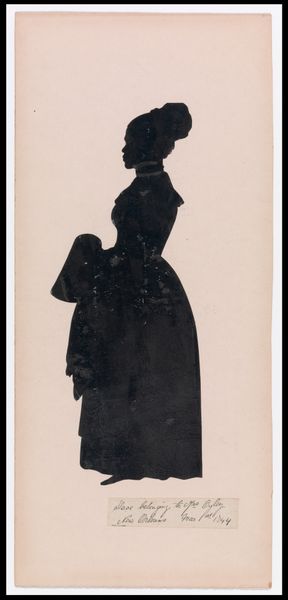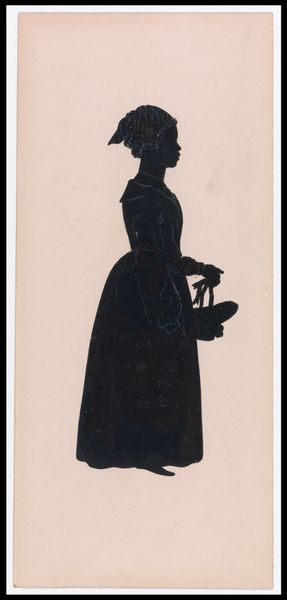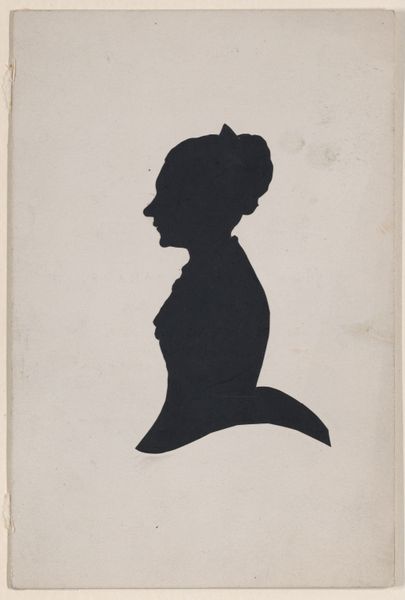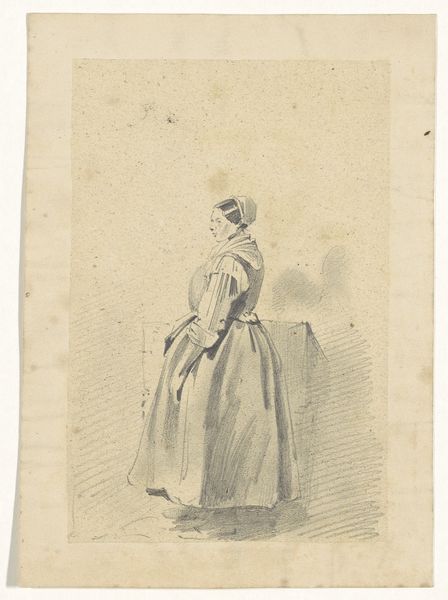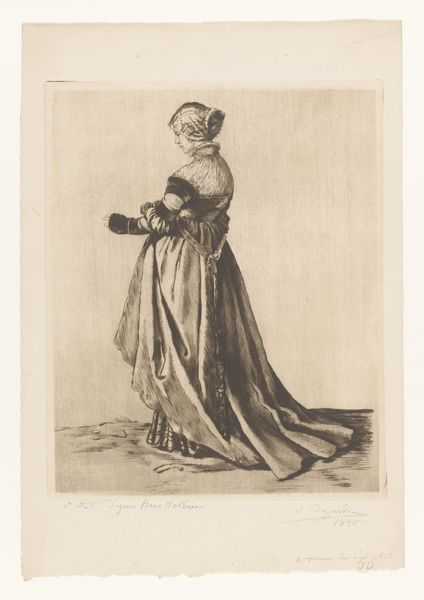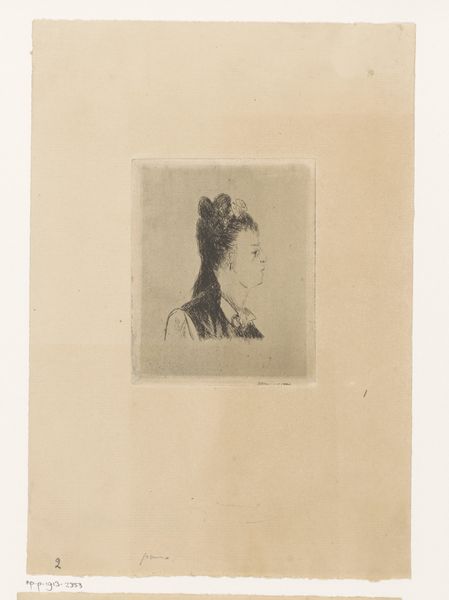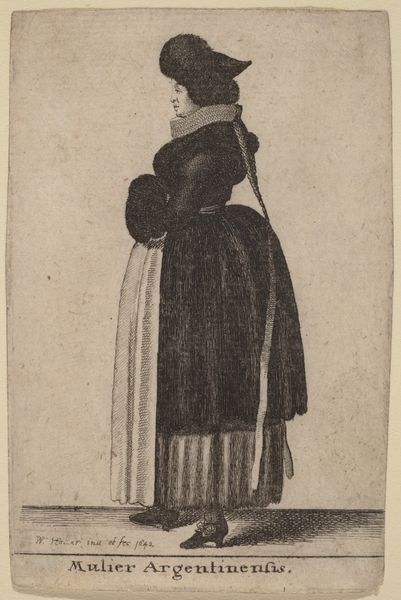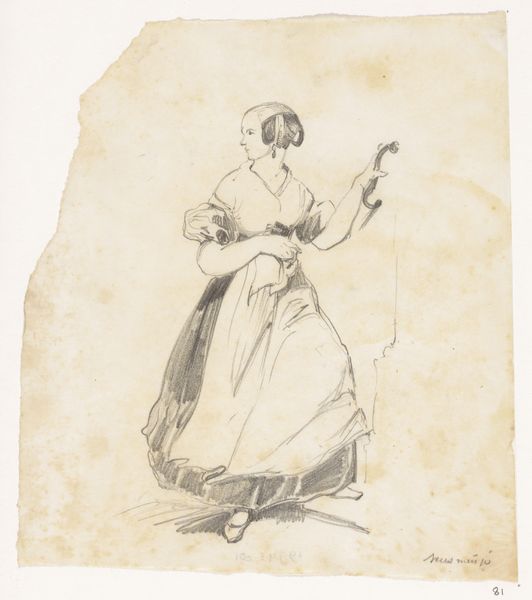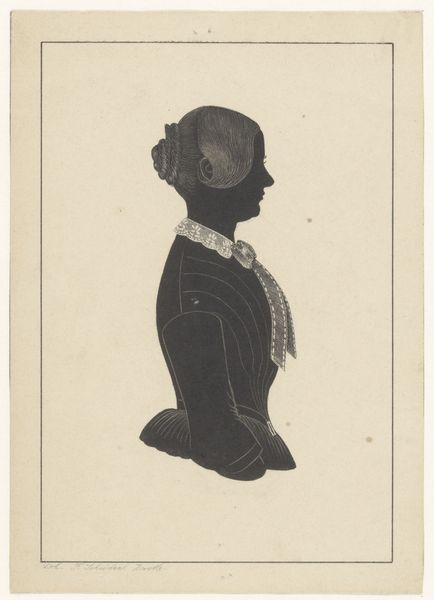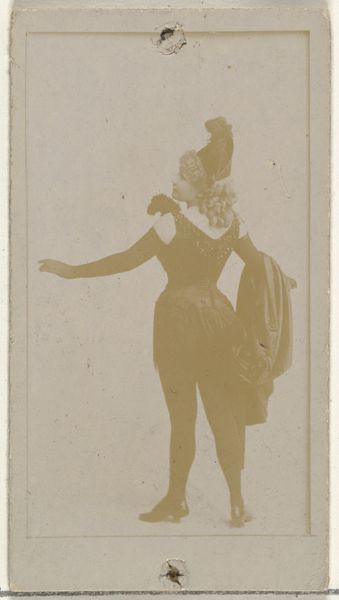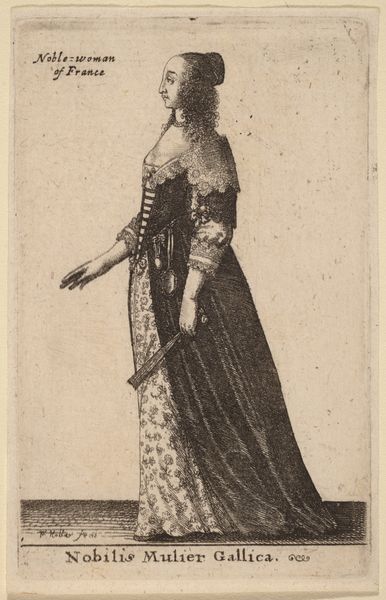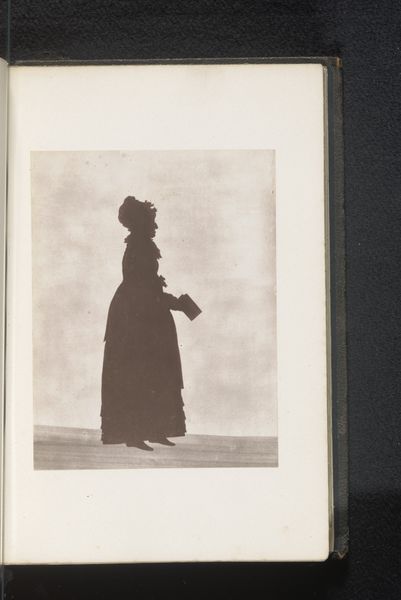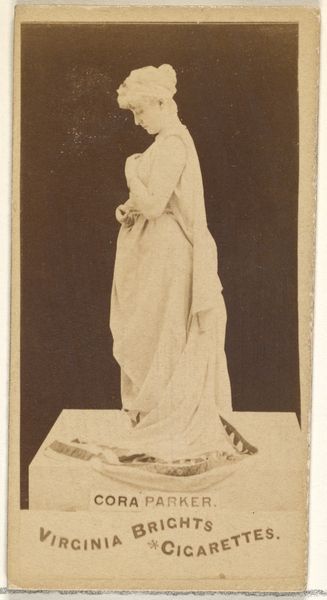
drawing, print, paper
#
portrait
#
drawing
# print
#
figuration
#
paper
#
romanticism
#
line
Dimensions: 305 × 151 mm
Copyright: Public Domain
Curator: Standing before us is a silhouette crafted by Auguste Edouart around 1830-1840, titled "Miss Cecilia Clifton." It is made of cut paper. Editor: There's something stark and elegant about this stark contrast. It’s refined and yet simplified to only a line. The essence of form here really arrests one’s attention. Curator: Indeed, silhouettes were a popular and affordable alternative to painted portraits in that era, offering a snapshot into the sitter's likeness, but also the labor, materials, and artisanal skill that produced the objects of genteel society. What does the stark medium convey, in your opinion? Editor: I think the purity of the line speaks to Neoclassical ideals. The stark black against the pale background is dramatic but controlled. The focus remains intensely on the structure and outline. I feel as though I can sense all that the artist captured of Cecilia Clifton, simply through this visual restraint. Curator: And it's also remarkable how Edouart, who was a rather prolific artist, was able to convey such nuances in form and class distinctions through the specific rendering of clothing and accessories. The sitter’s clothing here speaks volumes of labor. Look at the layers of material it would have taken to form such a distinctive and towering shape, itself a representation of Cecilia's status. Editor: The layering is wonderful—the ruffles at the hem provide dynamism within an otherwise still composition. It also allows one to concentrate fully on that perfectly rendered profile; its smooth and elegant unbroken line! Curator: Exactly! Even the means of production were mobile. Edouart toured extensively, crafting these portraits on demand, reducing the elite artistic process of portraiture to an industry with far wider implications for popular forms and their visual economies. Editor: It brings us back to the essence of perception – how a single line can convey so much and how effective art can arise out of a reductive process. Curator: Ultimately, “Miss Cecilia Clifton” offers not only a glimpse into 19th-century portraiture, but a reflection on the interplay of craft, industrial output and society through a lens that continues to resonate today. Editor: Absolutely, a visual echo frozen in time, shaped by skill and artistic intuition.
Comments
No comments
Be the first to comment and join the conversation on the ultimate creative platform.
